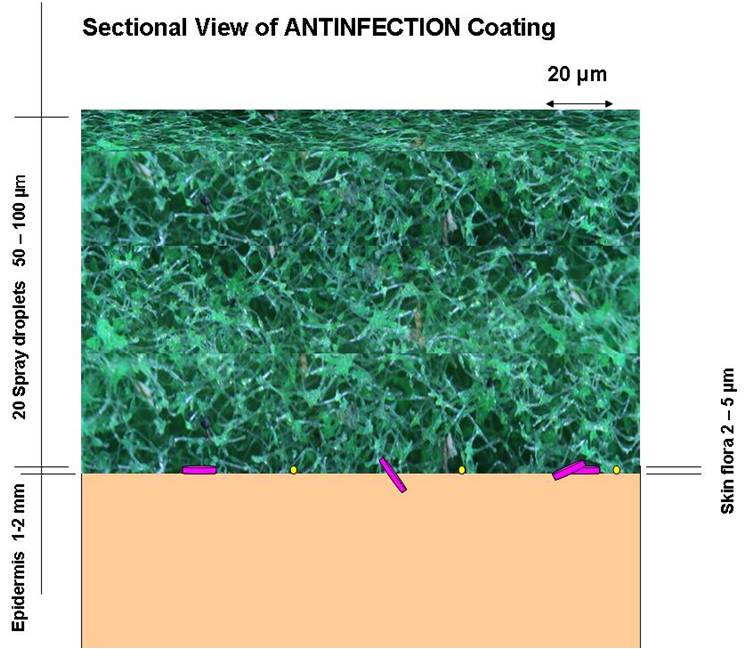persistent skin disinfectant
New research reveals that the novel SARS-CoV-2 coronavirus can survive on human skin for up to 9 hours, while the influenza A virus (which causes the seasonal flu) survived for just under 2 hours on skin.
SARS-CoV-2 coronavirus survived over 11 hours in a glob of mucus, compared to about an hour and a half for influenza A virus.
Both pathogens were killed within 15 seconds upon contact with hand sanitizer, suggesting that hand washing and/or disinfectants remain a vital tool in the fight against the pandemic.
The long, 9-hour survival time of SARS-CoV-2 on human skin may increase the risk of viral invasion in the body or its transmission from the skin to other surfaces, with a potential impact in the acceleration of the pandemic by people getting infected by touching surfaces or objects that have the virus on them before touching their mouth, nose or eyes.
Besides SARS-CoV-2 virus inactivation, the persistent skin disinfectant also solves sepsis problem:
- The global burden of sepsis is estimated to 48.9 million cases and 11 million sepsis-related deaths worldwide in 2017, which accounted for almost 20% of all global deaths.
- In 2017, almost half of all global sepsis cases occurred among children, with an estimated 20 million cases and 2.9 million global deaths in children under five years of age.
- Each year, at least 1.7 million adults in America develop sepsis and nearly 270,000 die as a result.
- 1 in 3 patients who dies in a hospital has sepsis.

The person preparing the skin should use pressure, because friction increases the antibacterial effect of an antiseptic. For example, alcohol applied without friction reduces bacterial counts by only log10 ~ 1.0–1.2 compared with log10 ~ 1.9–3.0 when friction is used, which damages skin. Alcoholic sprays have little antimicrobial effect and produce potentially explosive vapours.
The aim of skin disinfection is to remove and rapidly kill skin flora at the site of a planned surgical incision. The antiseptics that are currently available do not eliminate all microorganisms, and coagulasenegative staphylococci can be isolated even after three applications of agents such as iodine–alcohol to the skin.
The United States Food and Drug Administration defines a skin disinfectant as a “fast acting, broad-spectrum and persistent antiseptic-containing preparation that significantly reduces the number of microorganisms on intact skin”. There is no clear-cut level of bacterial skin load that should be removed or killed before surgery, and 80% of bacteria in surgical site infections originate from the skin of the patient.
The Food and Drug Administration requires testing at both 10 minutes and 6 hours: disinfectants should reduce colony forming units (CFU) by more than log10 > 2 at dry sites (e.g. abdominal skin) and by log10 > 3 at moist sites (e.g. groin).

Persistent skin disinfectant (Antinfection) is designed from ‘Military Experience’
- Trillions of Polymer Threads > ‘barbed wire’
- Trillions of Antiseptic Molecules > ‘land mines’
Mixed from Natural sources:
- Water-based without any alcohol
- Antiseptic Minerals, for extreme long-term effect log10 > 3
- Herbal Acids, for quick effect with high performance log10 > 8-9, for first usage or “after emergency“
- Sustainable Fungicide-additive
- Matrix-building Polymers = long-term effect against abrasion and wash-out, serves as a reservoir, inclusive wideband antiseptic
The example of microbe testing at 1 minute:
- Staphylococcus aureus log10 > 7.00
- Pseudomonas aeruginosa log10 > 7.26
- Candida albicans log10 > 4.87
